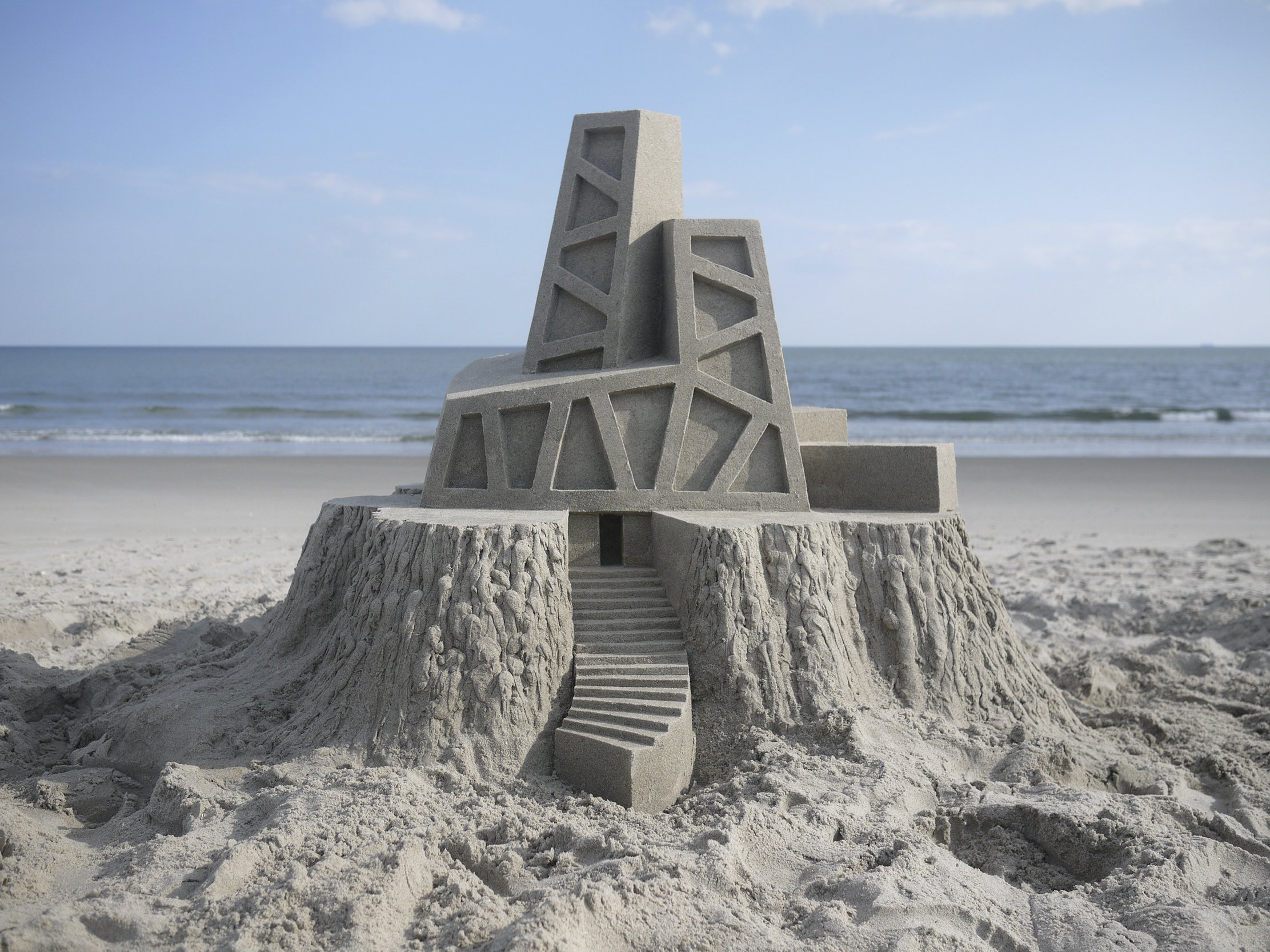Words Calvin Seibert Photography Calvin Seibert
Published in No 14
As a boy I spent many hours on the construction sites of my hometown, the nascent ski resort of Vail. Television had not arrived in our narrow mountain valley, so my brothers and I spent most of our time outdoors and, in my case, that meant building tree houses, Tonka Truck villages, water diversion projects and, of course, there were the construction sand piles, where I first got started working with sand.
In those days my family assumed I would become an architect, though later I came to understand what I had really been making was more sculpture than architecture and so, I ended up in New York and the School of Visual Arts in 1979. The next 40 years were spent fabricating sculpture for other artists, doing my own work, which was mostly drawing, and then there was the beach. While the early castles could be impressive, it wasn’t until digital photography and the opportunity to post things on the internet that I began being serious about the documentation and creation of ever new forms.
Crowded beaches are impossible, so for many years I built sandcastles on a quiet stretch of Jones Beach where the few regulars left me alone. When the train became too expensive, I switched to Fort Tilden in the Rockaways. There I was surrounded by hipsters with book bags and very little to say, and the National Park Service asked me to knock down my castles at the end of the day, so I moved on. I ended up at a piping plover preserve, beneath a brutalist housing complex at Rockaway Beach 60. There, I met a lovely grandmother whose summer job was to lay down the law regarding the preserve. Few people had anything more to say than “great job” though, occasionally, Frank Gehry was mentioned or Frank Lloyd Wright or the Mayans. My influences are obscure to the public: late Soviet architecture, Futurist set designers and Eritrean gas stations. The best thing anyone ever said was that my castle reminded them of the Roman Polanski film, Cu-de-Sac. I was in love.
The great thing about building sandcastles is that, at the end of the day, I can have something that looks quite substantial and complete: a solid looking sculpture that in any other material would have taken longer and cost considerably more. The process is perhaps more akin to drawing, the tools are simple, erasure is just a swipe of the hand, and decisions can be made more spontaneously. Drawing of course is a two-dimensional art form but, in a way, so are my castles. I build them to be photographed and to look good in late afternoon light from a single point of view. They may be finished on all sides but that always comes secondary to getting that one point of view just right.
Starting early is always best. You may find you’ll need every moment of daylight to finish what you’ve started. It also helps to get the hardest part of the work done before the heat of the day starts to strain one’s will. While most people prefer a sunny day at the beach, it is best for me if it is overcast or at least mostly cloudy; the work is easier, and the softer light makes for better images. Also, a harsh sun will dry out the castle too quickly, eroding the sharp edges before I’ve completed my work.
The standard 5-gallon bucket is my most essential tool. I can dig sand and create the initial pile with the bucket and then, over the course of the day, bring as many as 200 gallons of water up to the pile, which at the beginning looks like a wide caldera into which I pour water. It is important that all the sand is completely soaked, well into the sub-basement. Many of my taller castles will end up partially below grade and, when the design calls for more height, I can get it by digging down. So, there can’t be a stratum of dry sand anywhere.
When I begin building, I often lose sight of my original plan as new shapes start to suggest other possibilities and I fall into a rabbit hole of old motifs and not really creating something new. My aim is to expand the variety of forms within the body of work I’ve produced so far, and to do this I need to stay focused and stick to the sketch. If I do get off course, my prescription for what to do on a given day is whatever I didn’t do the day before. That is, if the castle was boxy and upright on Tuesday it should be slouchy with curves on Wednesday.
I am now back in Colorado and figuring out what I want to do next. I think about the land and how, years ago, I imagined returning to the west to build my own town. There is a history of course, my father’s ski resort; Michael Heizer’s City; Paolo Scolari’s Arcosanti; Clark Richert’s Drop City; abandoned mining claims; the sets for westerns; and so many ramshackle roadside attractions gone bust. Things have changed though: there is now so much scarring across the landscape that I can’t fathom wanting to construct anything of any scale. Those pristine blank slates, once so appealing, would be better off left alone. So, I’ve been making small roadside signs that only suggest something is up the road or “soon to be built on this site.” I take pictures of these abstract billboards then bring them home to be reconstituted into other things. It’s a big part of what was great about all those sandcastles, as Maude said in the Hal Ashby film, Harold and Maude, “Here today, gone tomorrow, so don’t get attached to things.”
Calvin Seibert is a n artist and a builder of sandcastles. @calvinseibert





